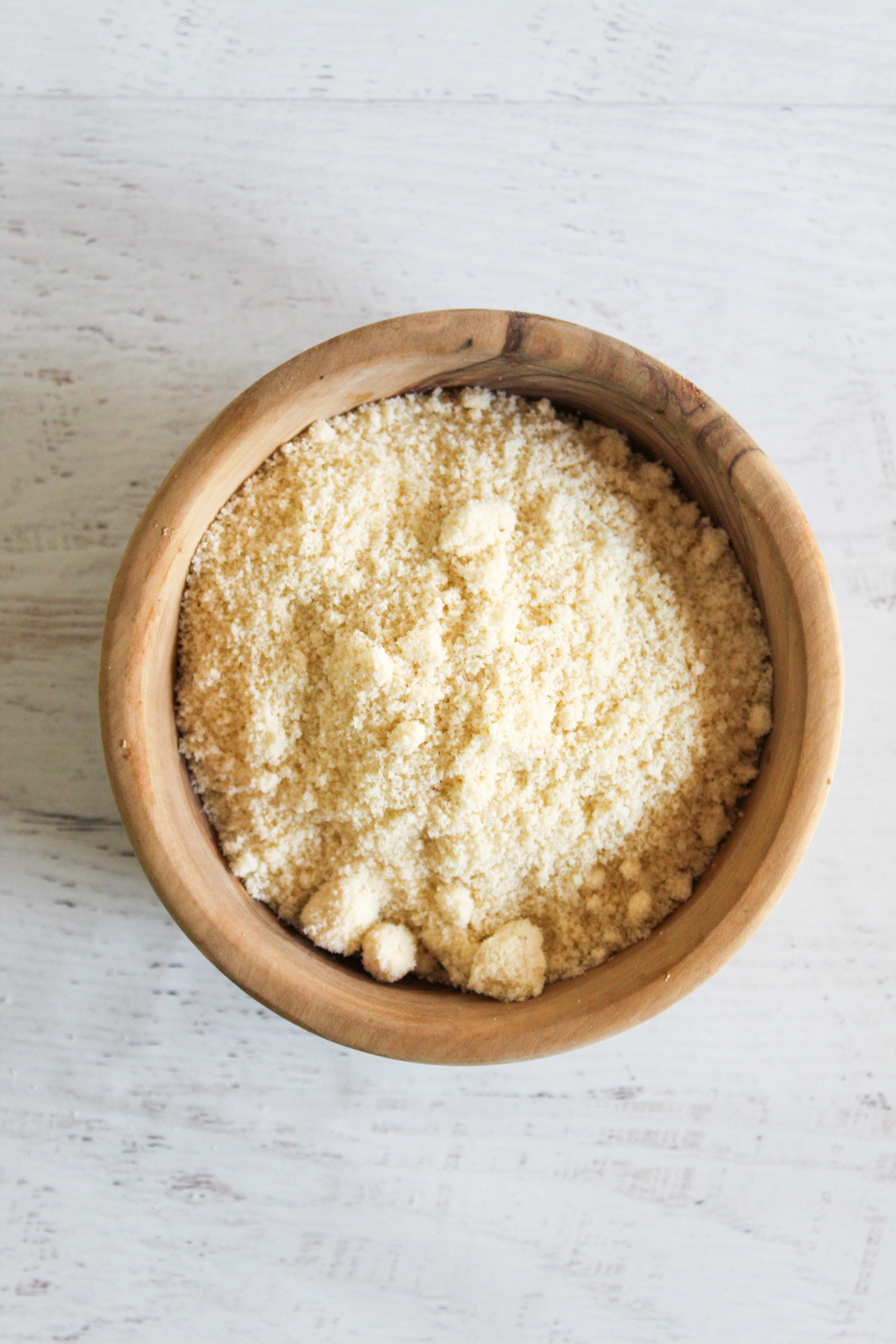Nut flours are frequently used in gluten-free baking, but it can be confusing to know which ones to use and when! Almond flour is the most commonly used nut flour, but hazelnut flour has become increasingly popular. Which one is best? How do you use them? Learn all the differences between hazelnut flour vs almond flour to know how to use them right every time!
I love using almond flour in my baked goods because it’s high in protein, naturally gluten-free, and adds a wonderful nutty flavor to my favorite almond flour recipes, like my cornbread, coffee cake, tortillas, chocolate chip cookies, and more. However, this is just one of many delicious nut flours available to you on your gluten-free diet!
Hazelnut flour is an excellent alternative that can transform the flavor profile in your favorite recipes, giving them a deeper, richer flavor. But are the two flours interchangeable? Is one better than the other? Let’s dig in!
Looking for more ingredient deep dives? Learn about the Oat Flour vs Almond Flour, Cassava Flour vs Almond Flour, and the Best Almond Flour Substitutes.
Jump to:
Key Takeaways: Hazelnut Flour vs Almond Flour
Hazelnut flour is made from ground hazelnuts, and almond flour is made from ground almonds. They are both naturally gluten-free and low carb.
For baking, choose blanched flours with a fine texture, not meals.
These flours are both very soft and tender and can be used interchangeably in recipes. However, hazelnut flour is higher in fat, which makes it more susceptible to burning. It also has a strong flavor that will stand out more in recipes, while almond flour has a more neutral flavor.
Look for recipes that utilize hazelnut flour specifically or substitute it for almond flour in your favorite gluten-free recipes.
What is Hazelnut Flour?
Hazelnut flour is a soft, fluffy powder made by grinding whole hazelnuts. Some brands may blanch and peel the hazelnuts to remove the outside skins, while others keep them on. It has a very soft, tender texture and a distinct hazelnut flavor that tastes wonderful in many recipes.
It is usually considered more of a specialty flour as it’s only used to make dacquoise and a few other recipes. However, it’s now easier to find online and can add a wonderful flavor to shortbread cookies and more.
Hazelnuts have a much stronger, earthier flavor than almonds, which tend to take on the flavor of whatever other ingredients are in the recipe. You’ll want to use hazelnut flour when its distinct flavor adds to the final product, like in recipes with coffee or chocolate.
Note about hazelnut meal
Hazelnut flour is slightly different from hazelnut meal, which is coarser and not as soft. If you want to use hazelnut flour as an almond flour substitute, it’s best to use finely ground hazelnut flour, not meal.
What is Almond Flour?
Like hazelnut flour, almond flour is made by grinding whole almonds into a soft, finely textured powder. It is commonly used in gluten-free baking mixes, macarons, and many other recipes.
Since it is derived from nuts and not grains, it’s a grain option for people with celiac disease, but it’s also low-carb enough for people on the ketogenic diet.
Best Nut Flour Substitutes
The great news is that different nut flours can generally be used interchangeably. This means that if you find a recipe that calls for almond flour, you can generally use:
- Hazelnut flour
- Pecan flour
- Walnut flour
- Peanut flour
- Sunflower seed flour
- Pumpkin seed flour
- Cashew flour
Although there is a mixture of seeds, nuts, and legumes on this list, they can all be used in a 1:1 substitution. However, they are not interchangeable with all-purpose flour. Traditional wheat flour can absorb much more liquid and will not contain nearly as much fat or moisture. It’s best to find a recipe that calls for almond flour or another nut flour instead of trying to make your own flour alternative.
Need some more almond flour substitutes? Learn how to swap it for oat flour, chickpea flour, and more.

Which is Better: Hazelnut Flour vs Almond Flour?
Although almond flour and hazelnut flour can be used in the same ways, there are some key differences. Most notably, they have different nutritional makeups, which affect their flavor and performance in recipes.
The best choice depends on the recipe you’re making and the final flavor profile you’re going for. In many situations, they can be used interchangeably with good results.

Nutritional Benefits
Depending on the brand, 100g of almond flour usually contains:
- 600 calories
- 20 grams of protein
- 53.3 grams of fat
- 20 grams of carbohydrates
- 6.7 grams of fiber
- 6.7 grams of sugar
It’s also a good source of calcium, potassium, vitamin E, and healthy fats, which support healthy cholesterol and heart health.
Similarly, 100g of hazelnut flour usually contains:
- 643 calories
- 14.29 grams of protein
- 60.71 grams of fat
- 17.86 grams of carbohydrates
- 10.7 grams of fiber
- 3.57 grams of sugar
It also contains calcium, iron, magnesium, vitamin C, and vitamin E. Hazelnuts are high in omega-3 fatty acids and antioxidants, which can reduce inflammation, hypertension, and potentially even cancer.
Although these stats are very similar, hazelnut flour has a slightly higher fat content while being a little lower in protein. It’s also even lower carb than almond flour (both total and net carbs) and contains less sugar. The health benefits are similar, although hazelnuts contain more trace minerals than almonds.
Allergies
Since both of these products are tree nuts, they are unsafe for people with nut allergies.
Uses
Hazelnut flour is a great substitute for almond flour and can be used in a 1:1 swap. This means that you can use 1 cup of hazelnut flour for every cup of almond flour. They’re ideal for adding a rich, nutty flavor to your favorite gluten-free baked goods.
Additionally, both flours can be used instead of bread crumbs to bread chicken, make meatballs, and more. However, hazelnut flour will usually burn faster than almond flour.
Price
This is the major difference between these two products. Almond flour is much more commonly available and affordable. You can find it in grocery stores in the baking section or online, and you usually pay $7-10 per pound.
Hazelnut flour is much harder to find. You will likely need to order online or seek it out at health food stores. Plan to spend around $13-15 per pound.
Best for Baking
These gluten-free flours can be used for sweet and savory recipes, although hazelnut flour has a more distinct hazelnut flour that stands out, while almond flour tends to take on the flavor of whatever it is mixed with.
Because hazelnut flour is higher in fat, it can burn faster than almond flour. This makes it less ideal for breading or frying but great for baking.
In fact, both of these flours are commonly used to make a dacquoise, a special type of French meringue made by folding ground nuts into the meringue mixture before baking. The two flavors pair wonderfully together, so you could try using half almond flour and half hazelnut flour for an extra flavor boost!
Baking with hazelnut flour
Check for doneness at least 5-10 minutes earlier than you would with almond flour to avoid burning.
FAQs about Hazelnut Flour vs Almond Flour
Yes! You can pulse raw whole hazelnuts in a food processor until they turn into a fine powder—the finer, the better. However, if you keep blending too much, the mixture will liquefy and turn into hazelnut butter. It is harder to make a consistent grind when you make nut flours at home, but this can be a good option if you have a lot of hazelnuts on hand.
Yes, hazelnut flour is an excellent substitute for almond flour. Use the same quantity of hazelnut flour as almond flour, but be sure to use finely ground hazelnut flour for the softest textures.
It has a stronger, bolder flavor that will stand out more, so it’s best to use it in recipes where the hazelnut flavor will enhance the final flavor, like in chocolate chip cookies, hazelnut shortbread, and more.



